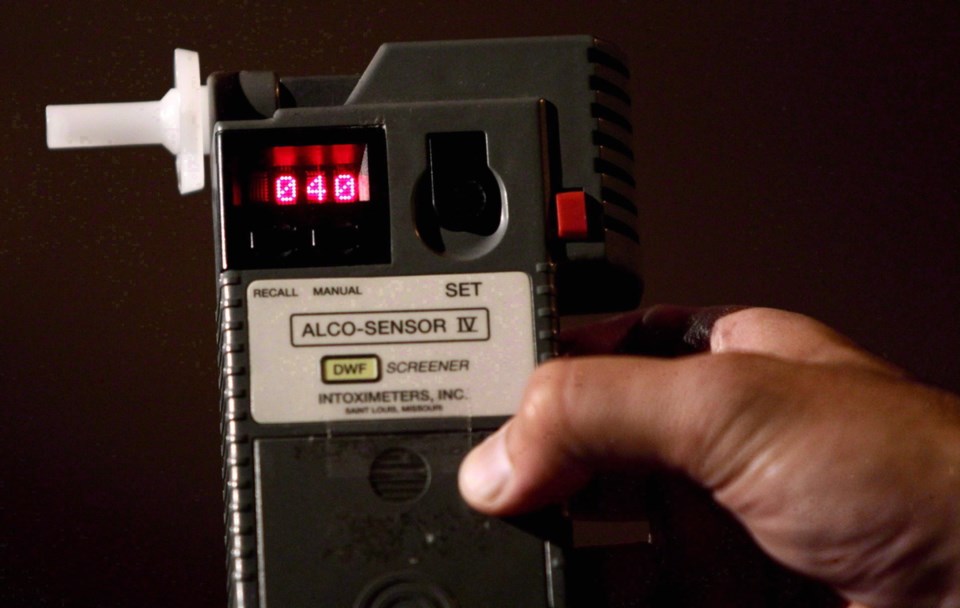Under Canada’s new impaired-driving laws, it’s a criminal offence to have “any detectable amount” of cocaine, methamphetamine, magic mushrooms, LSD, ketamine or PCP in your blood while driving.
For decades, it has been a criminal offence to drive while impaired by alcohol or drugs or both. Last December, when Bill C-46 came into force, the Department of Justice added specific limits for particular drugs.
“People just have no earthly idea about these regulations,” said Victoria criminal defence lawyer Michael Mulligan. “If police can detect it, you’re committing a crime. Any detectable amount, you’re guilty.”
It’s accepted that a driver with 80 milligrams or more of alcohol per 100 millilitres of blood is impaired. But what about the college student who used mushrooms two weeks ago?
“You can do a very careful analysis of blood and detect a minute amount of some drug, but there’s no reason to think that’s connected to driving problems,” said Mulligan, who is concerned that setting the limits at “any detectable level” will result in convictions of people who are not impaired or driving dangerously.
Scott Macdonald, a scientist with the Canadian Institute for Substance Use Research at the University of Victoria, said there have been few studies on how long such drugs can be detected in the blood. He believes LSD and PCP leave the system quickly, but that might depend on the person. According to one study, amphetamines can be detected for up to 46 hours in blood.
“There doesn’t seem to be a lot of scientific backbone behind the drug-impaired driving laws,” Macdonald said. “For cocaine, in many studies, it’s a performance enhancer. But if you’re using cocaine on a daily basis over the long term, there can be more longer-term deficits associated with it. People get jittery and impulsive.
“A lot of people are using recreationally once a month and not experiencing those effects. They could be caught up in the drug-impaired laws, even though they are not impaired.”
Bill C-46 sets very low thresholds for limits for THC, the primary psychoactive component of cannabis, Mulligan said.
Drivers with a THC level between two and five nanograms face a summary conviction with a $1,000 fine. Above five nanograms, they face mandatory minimum penalties of a $1,000 fine on a first offence, 30 days’ imprisonment on a second offence and 120 days’ imprisonment on a third offence.
Drivers with a THC level of more than 2.5 nanograms and having a blood-alcohol concentration above 50 mg per 100 ml will face the same mandatory minimum penalties.
“It’s controversial, because there’s no consensus that people are drug-impaired in their ability to operate a car at those levels of THC,” Mulligan said.
He said research shows that a heavy medical-marijuana user might not be impaired at those levels, but someone who has never used it before might be very impaired at the same levels. “Also, you could be at those levels for an extended period of time after not using marijuana.”
Medical-marijuana users might be at those levels all the time, Mulligan said. “Even if you haven’t used it for some time, you’re just not permitted to drive.”
Macdonald, who recently published Cannabis Crashes: Myths and Truths, also believes the government is overreaching with the impairment levels it has set for cannabis.
“THC is fat-soluble and stays a long time in the blood. THC has been detected for daily users who are abstinent for five days at levels between two and five nanograms,” he said.
Tim Stockwell, director of the Canadian Institute for Substance Use Research, agreed with Macdonald that it’s unclear if stimulants actually impair driving ability.
“At lower levels, my view is they might actually improve your driving,” Stockwell said.
“Certainly, opioids and central-nervous-system depressants are likely to impair driving and we should be exploring it actively.”
But even if it’s unclear whether someone would be impaired in every case, he believes most people support the legislation to deter people from driving impaired.
“It’s deterrence. But you keep it a civil penalty, not a criminal offence,” said Stockwell.
When civil penalties rather than criminal penalties were imposed for driving at a .05 blood-alcohol level, crash fatalities dropped 42 per cent in 2010, said Stockwell. “It is so effective and the police weren’t tied up in knots for hours.”
Mulligan pointed out that the new legislation also increases the maximum penalty for impaired-driving offences, such as refusing to provide a breath sample, to 10 years in prison.
That could mean that a permanent resident or a refugee claimant who is convicted and sentenced to six months or more in jail for a crime with a 10-year penalty would be subject to deportation with no appeal mechanism, he said.
“The person is deemed to have engaged in serious criminality. It’s easy to understand how someone new to Canada could end up in a situation like refusing to provide a breath sample.”
Convicting people who aren’t dangerous is problematic, he said — the government risks undermining the social pressure that’s effective in getting people to stop engaging in dangerous behaviour.
“People are smart and they’ll talk about these things. If you convict people who have a minute quantity of drugs in their system because they consumed something a week ago, people are going to realize what is going on,” Mulligan said.



